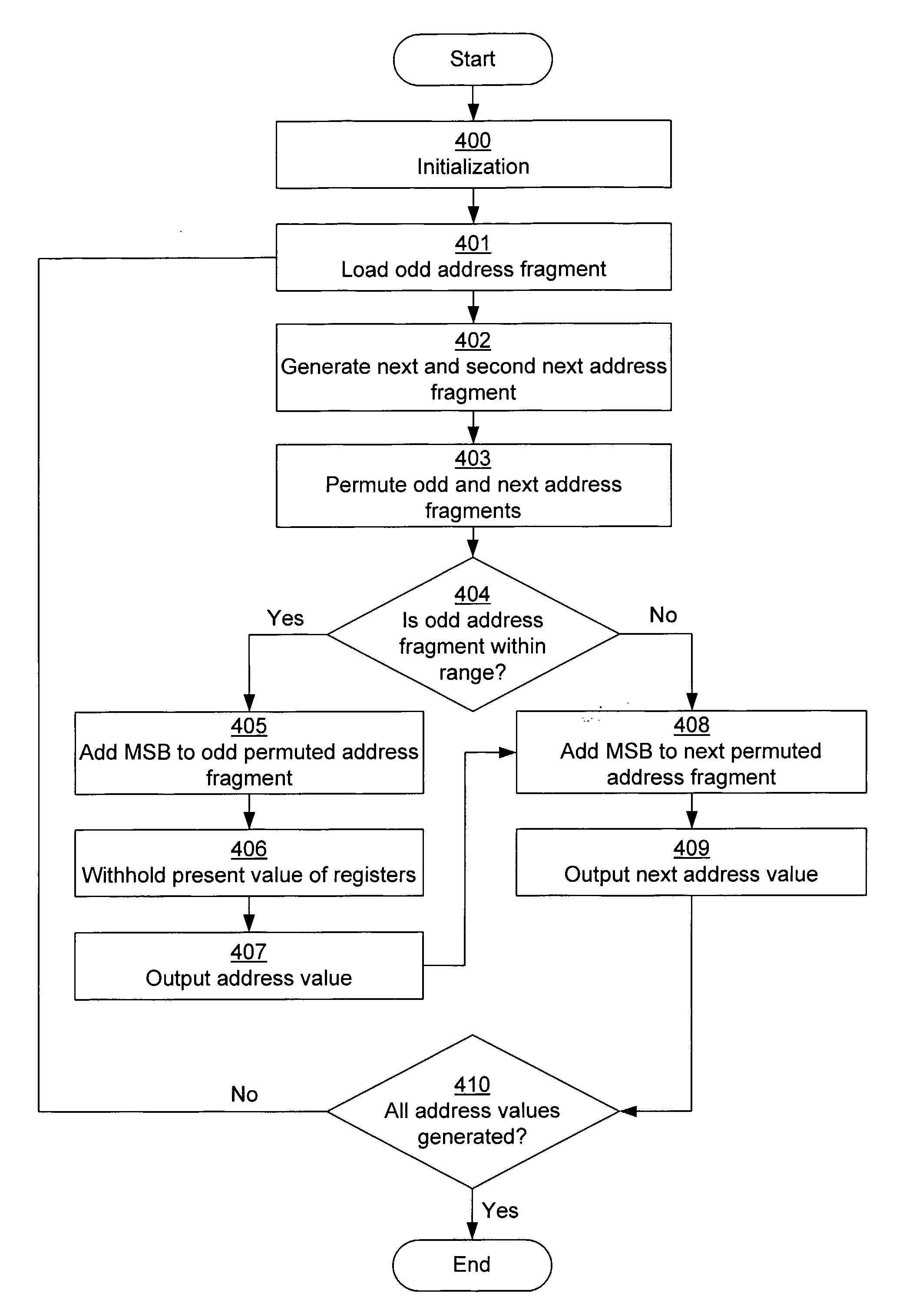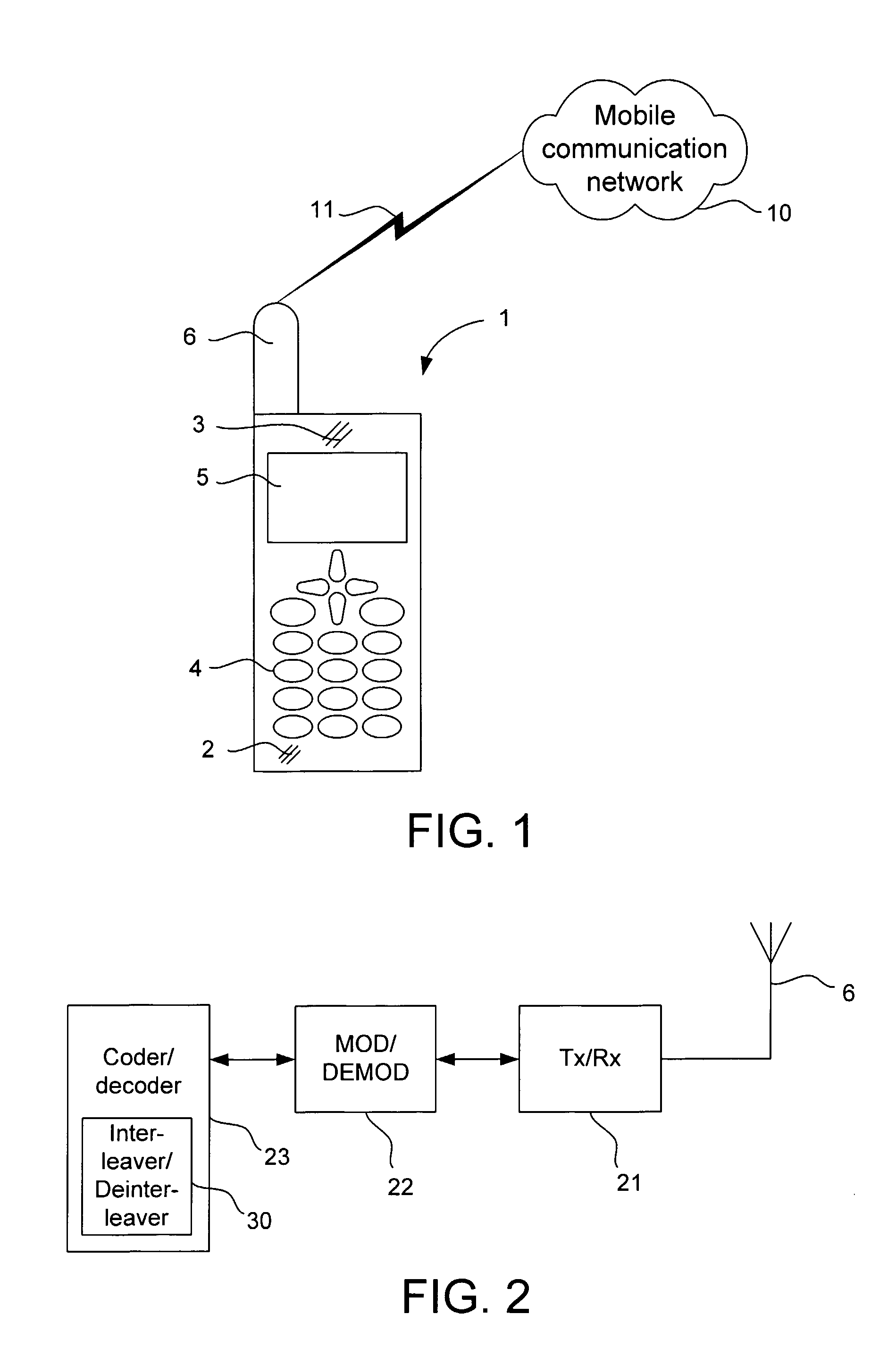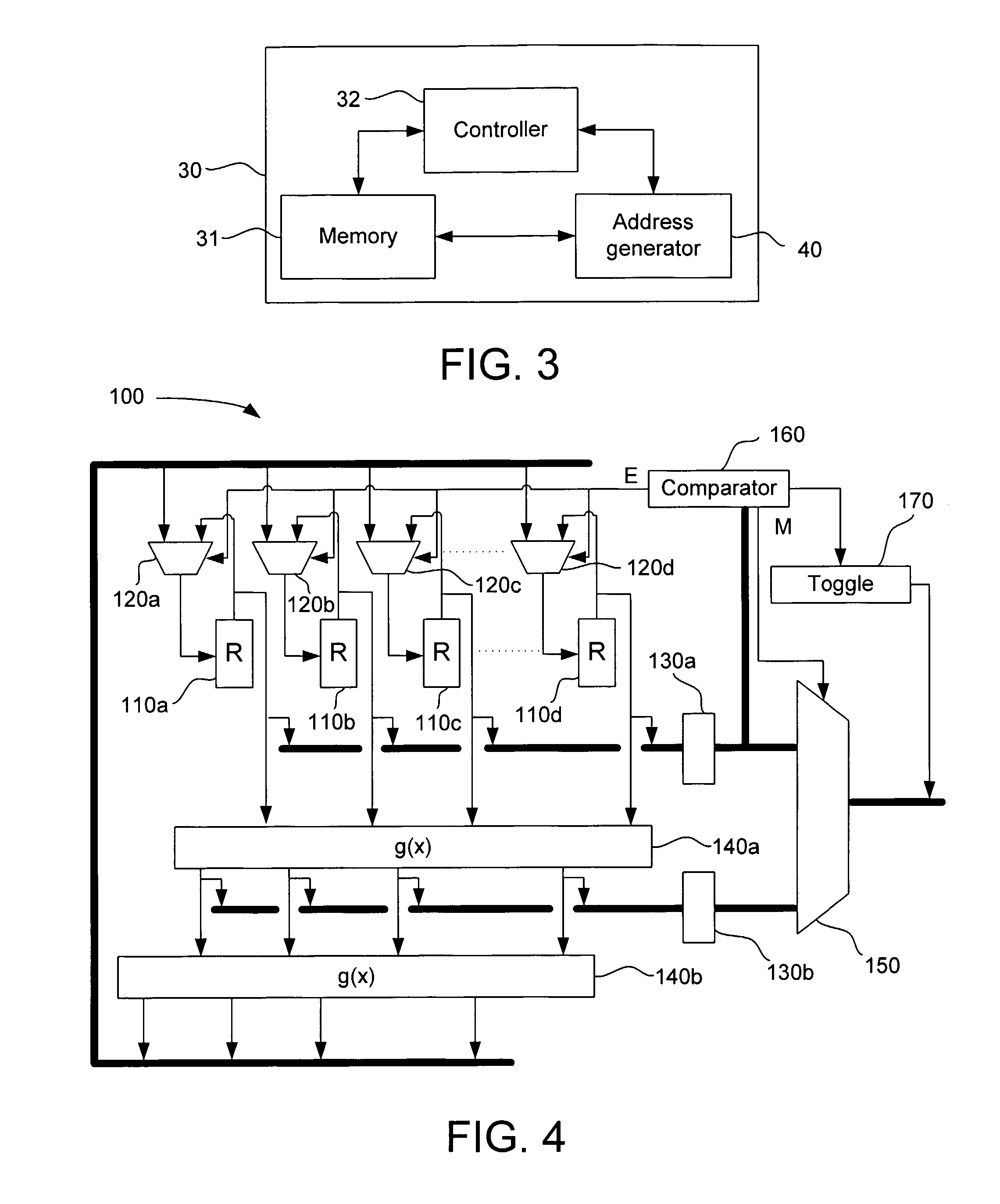Address generator for an interleaver memory and a deinterleaver memory
a technology of interleaver memory and address generator, which is applied in the direction of memory address generation/allocation/relocation, instruments, coding, etc., can solve the problems of large number of unnecessary comparisons, and require unnecessary time and processing capacity, so as to reduce the processing capacity needed compared to address generation schemes known in the art, the effect of reducing the processing capacity
- Summary
- Abstract
- Description
- Claims
- Application Information
AI Technical Summary
Benefits of technology
Problems solved by technology
Method used
Image
Examples
second embodiment
[0060]FIG. 5 illustrates a device 200 for generating address values according to the invention. Components corresponding to components of the embodiment of FIG. 4 are denoted by the same reference numerals. In the embodiment of FIG. 5, the present address fragment R′i and the next address fragment R′i+1 are generated during consecutive clock cycles. During a first clock cycle, the present address fragment is available from the registers 110a-110d, and permuted by the single permutation unit 130a. For every second, i.e. odd generated permuted address fragment, the comparator 260 is adapted to determine whether the permuted address fragment is within range, according to the same principles as described above. For every even permuted address fragment, the comparator 260 is adapted to acknowledge the output of the permutation unit 130a without any comparison.
[0061] If the present permuted address fragment Ri is odd and is determined to be within range, the comparator 260 will instruct t...
third embodiment
[0063]FIG. 6 illustrates an address generator 300 according to the invention. Components corresponding to components of the embodiment of FIG. 4 are denoted by the same reference numerals. In the embodiment of FIG. 6, the present, the next and the second next address fragments are generated according to the same principles as described in relation to FIG. 4. The difference is that in the embodiment of FIG. 6 the comparator 360 is adapted to determine whether the present (odd) address fragment will generate a permuted address fragment, and consequently the address value, which may be out of range. Thus, the comparator 360 has knowledge of which address fragments that may generate permuted address fragments out of range. Such address fragments may be stored in an internal memory 361 or register of the comparator 360. The generated present address fragment is compared to address fragment values stored in the memory 361 to check whether the present permuted address fragment will be with...
PUM
 Login to View More
Login to View More Abstract
Description
Claims
Application Information
 Login to View More
Login to View More - R&D
- Intellectual Property
- Life Sciences
- Materials
- Tech Scout
- Unparalleled Data Quality
- Higher Quality Content
- 60% Fewer Hallucinations
Browse by: Latest US Patents, China's latest patents, Technical Efficacy Thesaurus, Application Domain, Technology Topic, Popular Technical Reports.
© 2025 PatSnap. All rights reserved.Legal|Privacy policy|Modern Slavery Act Transparency Statement|Sitemap|About US| Contact US: help@patsnap.com



